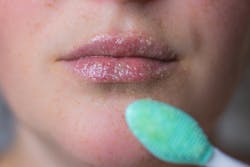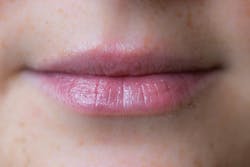As a dental hygienist, I think of the dental assistant as the sickle to my scaler, the varnish to my fluoride, or the polish to my prophy. I’m referring, of course, to how valuable the dental assistant is in my everyday practice of hygiene.
I start my workday pretty much the same way every morning. I reach in the drawer for my sterilized pack of instruments, some gauze squares, saliva ejector, prophy angle, and prophy paste to set my tray for my first patient. I find the cavitron tip I like and pull out a patient bib and cup, grab a mask, and boom! I’m ready to go.
Why is this all so routine for me? It’s due to the behind-the-scenes work of the dental assistant, who checks and fills supplies for me as needed so I can stay on task and on time and have all of my basic needs at my fingertips. The role of the dental assistant is all this and so much more. As we add more procedures to our practices, assistants are needed to help keep the schedule from swallowing up everyone.
Not to mention, assistants need to keep educating themselves on new products and procedures being used in their practices, whether it’s facial cosmetics such as botox, or the newest whitening options. Patients often ask the assistant questions about their treatment or what to expect after they leave the office. A well-informed assistant not only shows the depth of his or her knowledge, but also increases patient trust in the practice and helps ease any anxiety.
Whether you’ve been a dental assistant for only a few years or you’re a seasoned pro, being willing to learn more and keep up with the ever-changing world of dentistry is imperative. Within the last year our office has included extraoral care into our practice. What do I mean by that? We’ve added the perioral region in our realm of examination—the lips and lip care treatment. The dental assistant is a key player.
Lip importance and anatomy
Let’s discuss lips and their importance. What do they do and what is their basic anatomy? The lips help in the articulation of sound and speech formation.[1] Because they have their own muscles, lips are easily movable. They provide masticatory competence such as holding food in the mouth and maintaining an oral seal. The lips play a substantial part in the formation of smiles, frowns, pouts, and other shows of emotion.[2] The upper and lower lips are referred to as the labium superior oris and the labium inferius oris.
The vermilion border is the juncture where the lips meet the surrounding skin of the mouth, and the colored part of the lips within the borders is called the vermillion zone.[3] The vermilion is made of highly vascularized, nonkeratinized stratified squamous epithelium. Interestingly, one reason lips dry out so easily is that they have no salivary, sweat, or sebaceous glands. The lips have only three to five layers of skin, which when compared to the rest of the face is significantly less.[4] The vermilion border of the upper lip, which forms a double curve, is known as Cupid’s bow. The philtrum is the vertical groove extending from the top of the lip to the nose. It coincides with the philtral columns, which give the bow appearance to the upper lip.
Lip concerns
What are some common lip issues? Most people experience some type of dryness, cracking, flaking, swelling, bleeding, or soreness of the lips. No matter what the season, common things that set people up for lip issues are touching the lips, licking the lips, certain medications, dehydration, and weather. Those who are at higher risk are mouth breathers who blow air in and out of their mouths repeatedly, drying the lips continuously and stripping away the moisture. Unfortunately, part of the aging process leads to dry lips. Lips lose volume, become thinner, and develop more fine lines due to a decrease in collagen.[1]
Lip care
Dentists and hygienists may initially do the intraoral or extraoral exam. However, there is a need for dental assistants to help with education and play a role in helping patients understand that prevention is imperative when it comes to lip care. They may also help perform lip care on patients.
What might this look like from a dental assistant’s point of view? The dentist initially greets and examines the patient and mentions the dry condition of the patient’s lips during the extraoral exam. Many times, the doctor will leave the operatory for a period of time to attend to another exam. This is an ideal time for the dental assistant to have a conversation about why the lips are susceptible to dryness and cracking, how to avoid some of these issues, and how to better care for the lips.
To take care of the lips, it is necessary to exfoliate them to remove dead skin cells. The rate at which people naturally shed old skin cells slows with age, which creates a flakey and rough build-up on the surface of the lips.5 A vegan lip scrub with healthy ingredients such as shea butter, coconut oil, avocado oil, and other nutrient-rich components is recommended. This should be done once or twice a week to help speed up the cell-shedding process. Massaging the scrub in small circular movements on the top and bottom lip will remove dead skin cells, circulate blood flow to the area, and promote collagen production.6
Collagen is a protein found in the body that gives lips their structure and makes them look full and smooth. As collagen becomes less abundant, lips become thinner and appear more wrinkled.7 Another way to battle the fine lines and wrinkles and condition the lips is to use a hyaluronic acid lip mask following the lip scrub. The hyaluronic acid also helps temporarily plump lips.
The final step in a lip care routine is to hydrate them after conditioning them with the lip mask. Vitamin E contains antioxidant properties that helps protect skin cells. A vitamin E-based serum should be applied as needed but is definitely recommended before bed because night air dries out lips.8 Drinking water regularly is a crucial addition to using the lip serum to keep skin and lips hydrated.
As mentioned, lip care treatments can be done in the dental office. As dental professionals, we spend plenty of time near the lips of our patients. We can easily give them our opinion on how to take better care of their lips and how to perform these recommended lip care steps.Conclusion
Lip care education and the extraoral region of the mouth may be something your dental practice values, and lip care procedures may soon be performed in your dental office. Be willing to increase your knowledge in these areas as they present themselves to you. Continue to increase your value in the dental office and expand on the knowledge and experience you already possess!
References
1. https://en.wikipedia.org/wiki/Lip.
2. http://www.lipbook.com/education/the-functions-of-the-human-lip/. Published Oct.12, 2015.
3. http://www.lipbook.com/education/what-anatomically-is-the-human-lip/. Published Oct.15, 2015.
4. https://www.ncbi.nlm.nih.gov/. Center for Biotechnology information.|
5. Foutsizoglou, S. Anatomy of the aging lip. The PMFA journal, https://www.thepmfajournal.com/. Published Dec.1, 2016.
6. Reasons to exfoliate your lips. https://www.melaniesutrathada.com/blog/2017/4/5/reasons-to-exfoliate-your-lips. Published April 5, 2017.
7. 5 easy ways to plump your lips without injections. https://cheekyphysique.com/plump-lips-without-injections/. Published Aug. 20, 2018.
8. Vermillion Cosmetics. Clinical lip scrub, lip mask, vermattified lip serum. https://cheekyphysique.com/.
Becky Andres, RDH, is a practicing clinician with over 25 years of experience. She is also director of dental education at Vermillion Cosmetics. She can be reached at [email protected].
About the Author
Becky Andres, RDH
Becky Andres, RDH, is a practicing clinician with 25 years experience. She is director of dental education at Vermillion Cosmetics. She can be reached at [email protected].



